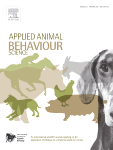Document type: DG SANTE audit report 2022-7523 of the European Commission
Author: DG SANTE
Preview: This report describes the outcome of an audit of Spain, carried out remotely from 22 to 24 March and 26 July 2022 and on-the-spot from 20 to 21 July 2022 as part of Directorate-General for Health and Food Safety work programme.
The report contains recommendations to the competent authoritie
The objective of the audit wasto evaluate the suitability and effectiveness of the measures in place to prevent injury or undue suffering to animals (cattle, sheep and goats) during transport by livestock vessel to non-EU countries. The audit also followed up the implementation of actions committed by the authorities after the previous Commission audit in this area, in 2018.
The report concludes that Spain has significantly improved its system of official controls since the previous Commission audit and addressed most of that audit recommendations. The current systemminimises the risks for the welfare of animals during their transport by livestock vessel.
There is good cooperation between different authorities involved in the transport of animals and this topic is treated as a priority in the country. The authorities have reinforced the control system with laws, protocols and instructions, and the system covers all the necessary elements and steps, including authorisation of sea transporters, pre-loading inspection of vessels and inspection of the fitness of animals before they enter the vessels.
The port veterinarians do not check the functioning of certain equipment during the pre-inspection of the vessel, as they do not have technical knowledge for it and do not have guidance or instructions on how this should be done. Many sea transporters have been authorised with very generic contingency plans, which are likely to be of little value to protect the welfare of the animals in case of emergency.
There is permanent veterinary presence during the loading of animals into the vessel. However, the veterinarians temporarily contracted for this do not have sufficient knowledge or support for carrying out controls properly. Due to the type of contract and administrative arrangements, this problem is likely to persist and it is unclear whether the authorities will continue to ensure that permanent presence also for the future. The number of official staff during loading is barely sufficient to complete all necessary tasks properly, which overloads port veterinarians and is likely to cause mistakes and lead to inefficiencies.
There is a good system to minimize the risk of vehicles waiting for long periods of time at the port before the animals are loaded into the vessel, but this fails occasionally. The ports receiving animals do not have facilities to rest, feed and water animals in case of delays and the farms identified nearby for this purpose are not used even if delays exceed 4 hours. This, together with the fact that the drivers ignore official instructions and do not park in shaded areas, creates a risk for the welfare of the animals in the few instances that delays might happen.
The authorities apply fines and sanctions, in case of permanent injury to animals and for cases with several cumulative non-compliances. In specific situations, and as a preventive measure, they also prevent transporters from operating until they correct the non compliance. However, the sanctioning system that applies to animal welfare transport proves to be burdensome and weak to prevent relapse.
The report contains recommendations to the competent authoritiesaimed at addressing areas in which further improvements are required or to address the shortcomings identified.






